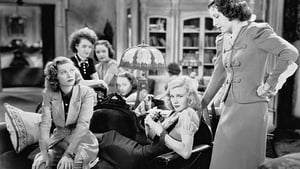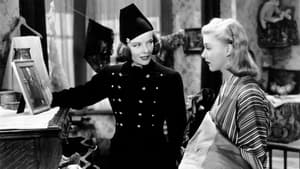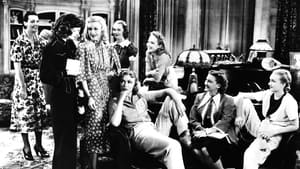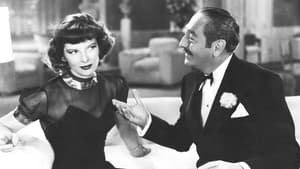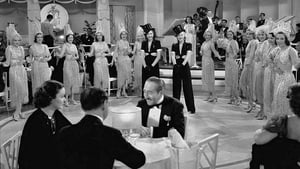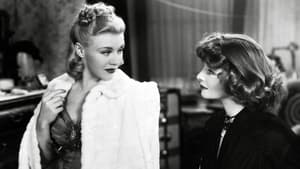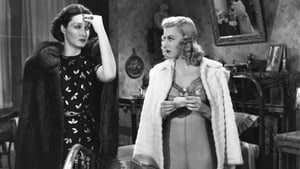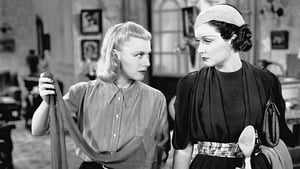Contact: [email protected]
Video Sources 0 Views
- Watch trailer
- Stage Door


Synopsis
Table of Contents
ToggleReview: In Stage Door (1937) – A Captivating Glimpse Behind the Curtain of Broadway Drama

Introduction
“In Stage Door” (1937) offers a mesmerizing glimpse into the world of Broadway theater, where dreams are forged, ambitions clash, and friendships are tested in the pursuit of stardom. In this review, we’ll explore the significance of this classic film, its impact on audiences, and its enduring legacy in the realm of dramatic cinema.
Check The Full Colorized Movies List
Check Our Colorized Movies Trailer Channel
Understanding In Stage Door 1937: Director, Cast, and Genre
Directed by the esteemed Gregory La Cava, “In Stage Door” (1937) showcases his adeptness at capturing the essence of human drama and emotion on screen. The film boasts a stellar ensemble cast, including Katharine Hepburn, Ginger Rogers, and Adolphe Menjou, whose performances breathe life into the vibrant world of the theater. Blending elements of comedy, drama, and romance, “In Stage Door” (1937) invites audiences to experience the highs and lows of life in the footlights.
Exploring the World of In Stage Door 1937: Plot and Characters
Set against the backdrop of a New York boarding house for aspiring actresses, “In Stage Door” (1937) follows the trials and tribulations of a group of young women as they navigate the competitive world of show business. Led by the determined Terry Randall, played by Katharine Hepburn, and the street-smart Jean Maitland, portrayed by Ginger Rogers, the residents of the boarding house forge bonds of friendship and rivalry as they chase their dreams of theatrical success. Along the way, they confront issues of love, ambition, and sacrifice in their quest for fame and recognition.
The Art of Film Colorization
While “In Stage Door” (1937) was originally filmed in black and white, its timeless story and compelling characters lend themselves well to the art of film colorization. By adding color to the film’s iconic scenes and settings, colorization allows audiences to experience the glamour and excitement of Broadway theater in vivid detail, immersing them in the world of the story and enhancing their emotional connection to the characters.
Early Colored Films: A Brief History
The history of colored films dates back to the early days of cinema, with filmmakers experimenting with various techniques to add color to their creations. From hand-tinted frames to early Technicolor processes, the evolution of colored film has been marked by innovation and creativity, paving the way for the development of modern colorization techniques that continue to captivate audiences to this day.
In Stage Door 1937 and Its Early Colored Version
The decision to release “In Stage Door” (1937) in a colorized format was met with both excitement and trepidation. While purists may argue that colorization compromises the film’s artistic integrity, others welcome the opportunity to experience the story in a new and visually stunning way. Ultimately, the early colored version of “In Stage Door” (1937) offers audiences a fresh perspective on the classic film, allowing them to appreciate its timeless themes and captivating performances in a vibrant new light.
The Debate Over Film Colorization
The debate over film colorization remains a contentious issue in the world of cinema, with proponents praising its ability to breathe new life into classic movies and introduce them to a new generation of viewers, while detractors argue that it diminishes the authenticity of the original work and alters the director’s artistic intent. As the debate continues, filmmakers and audiences alike are left to ponder the merits and drawbacks of colorization in the ever-evolving landscape of cinema.
Examining In Stage Door 1937 as an Early Colored Film
As with any colorized classic, the impact of colorization on “In Stage Door” (1937) is a matter of personal interpretation. Some may argue that it enhances the film’s visual appeal and immerses viewers in its world, while others may feel that it detracts from the stark beauty of the original black and white version. Regardless of one’s stance on the issue, there’s no denying the enduring power of “In Stage Door” (1937) as a timeless classic that continues to resonate with audiences of all ages.
Influence and Legacy: In Stage Door 1937’s Impact on Cinema
“In Stage Door” (1937) has left an indelible mark on the world of cinema, inspiring countless filmmakers and captivating audiences with its timeless tale of friendship, ambition, and sacrifice. From its witty dialogue to its memorable performances, the film continues to resonate with viewers around the globe, reaffirming its status as a beloved classic of the dramatic genre.
Director’s Cinematic Legacy: Beyond In Stage Door 1937
Gregory La Cava’s influence extends far beyond “In Stage Door” (1937), with a diverse body of work that continues to captivate audiences to this day. From “My Man Godfrey” to “Private Worlds,” La Cava’s films are celebrated for their keen insight into the human condition, their biting wit, and their timeless themes. Through his groundbreaking work, La Cava has left an indelible imprint on the world of cinema, inspiring generations of filmmakers to follow in his footsteps.
Themes Explored in In Stage Door 1937
“In Stage Door” (1937) explores a myriad of themes, from the pursuit of fame and fortune to the bonds of friendship and the sacrifices we make for our dreams. Through its richly drawn characters and poignant storytelling, the film invites viewers to ponder the complexities of human nature and the universal desire for acceptance and validation. As audiences immerse themselves in the world of “In Stage Door” (1937), they are reminded of the enduring truths that bind us together and the transformative power of art to illuminate the darkest corners of our souls.
Reception and Controversy Surrounding In Stage Door 1937
Upon its release, “In Stage Door” (1937) received widespread critical acclaim, with many praising its sharp dialogue, nuanced performances, and insightful portrayal of the theatrical world. However, the decision to release the film in a colorized format sparked debate among purists, reigniting the age-old discussion surrounding film preservation and artistic integrity. Despite the controversy, “In Stage Door” (1937) remains a beloved classic that continues to resonate with audiences of all ages, reaffirming its status as a timeless masterpiece of the dramatic genre.
Where to Watch In Stage Door 1937 Online
For those eager to experience the timeless magic of “In Stage Door” (1937), the film is readily available on popular streaming platforms such as Netflix, Amazon Prime, and Hulu. Whether you choose to watch it in its original black and white format or the early colored version, “In Stage Door” (1937) promises to transport you to a world of drama, intrigue, and romance, where the footlights burn bright and the human spirit shines even brighter.
FAQs About In Stage Door 1937
Q: Is “In Stage Door” (1937) based on a true story? A: No, “In Stage Door” (1937) is a fictional tale crafted by screenwriter Morrie Ryskind, who drew inspiration from his own experiences in the world of theater.
Q: Who are the main actors in “In Stage Door” (1937)? A: “In Stage Door” (1937) features an ensemble cast led by the talented Katharine Hepburn and Ginger Rogers, whose dynamic performances bring the characters to life with depth and authenticity.
Q: What awards did “In Stage Door” (1937) win? A: While “In Stage Door” (1937) did not win any major awards, it received critical acclaim for its sharp dialogue, memorable performances, and insightful portrayal of the theatrical world.
Q: Why was “In Stage Door” (1937) released in a colorized format? A: The decision to release “In Stage Door” (1937) in color was made to introduce the film to a new generation of viewers and enhance its visual appeal for modern audiences. While the choice to colorize the film sparked debate among purists, it ultimately allowed “In Stage Door” (1937) to reach a wider audience and ensure its continued relevance in the annals of cinematic history.
Conclusion
“In Stage Door” (1937) stands as a timeless testament to the power of art to illuminate the human condition and transport audiences to another time and place. Whether experienced in its original black and white format or the early colored version, the film continues to captivate audiences with its unforgettable characters, sharp dialogue, and poignant storytelling. As we reflect on its enduring legacy, let us celebrate “In Stage Door” (1937) as a classic masterpiece that continues to inspire and entertain viewers of all ages, reaffirming its status as a true gem of the silver screen.
